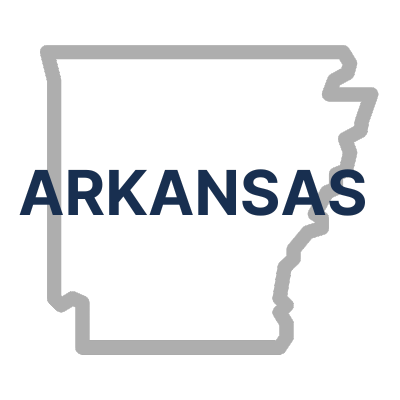So, we asked state education agency (SEA) leaders in seven states: How are you monitoring the classroom-level implementation of your literacy policies? And what data are you collecting?
These are the lessons they shared:
1. Leverage—and track—the collective power of districts.
 Tennessee's K–12 Literacy Implementation Network created a competitively funded grant program as part of its Reading 360 initiative. The program is designed to support districts' implementation of high-quality instructional materials (HQIM) in 59 districts across 10 regional cohorts. Each regional cohort includes one mentor district with a proven record of implementing HQIM and a willingness to support other districts. Districts in the network have access to professional development, free coaching, and opportunities for teachers to observe and be observed. Perhaps most critically, the state requires that participating districts stay in the network for five years. This is an important expectation—that change will happen over the long term, with sustained effort and continuous monitoring.
Tennessee's K–12 Literacy Implementation Network created a competitively funded grant program as part of its Reading 360 initiative. The program is designed to support districts' implementation of high-quality instructional materials (HQIM) in 59 districts across 10 regional cohorts. Each regional cohort includes one mentor district with a proven record of implementing HQIM and a willingness to support other districts. Districts in the network have access to professional development, free coaching, and opportunities for teachers to observe and be observed. Perhaps most critically, the state requires that participating districts stay in the network for five years. This is an important expectation—that change will happen over the long term, with sustained effort and continuous monitoring.Participants in the network cultivate a shared language and understanding of what effective reading instruction looks like, which allows districts to learn from each other. Through low-stakes and non-evaluative classroom observations, or "learning walks," district leaders and educators use Tennessee-specific Instructional Practice Guides to steer their discussions and feedback, while also providing a common tool for assessing how well implementation is progressing across the state.
Each regional cohort reports the data collected from these learning walks to the TN Department of Education. The state reviews the data quarterly and uses it to identify statewide instructional patterns and determine what professional development opportunities the state should invest in, as well as what further support school and district leaders may need.
2. Collect and publish data on leading indicators.
 Less than half of states publish which curricula their districts are using. To promote district adoption and use of high-quality curricula,1062 Colorado passed the Literacy Curriculum Transparency Act, which requires the Colorado Department of Education to publish the scientifically based core and supplemental reading curricula districts use by grade and by school—a level of detail not found in most states.
Less than half of states publish which curricula their districts are using. To promote district adoption and use of high-quality curricula,1062 Colorado passed the Literacy Curriculum Transparency Act, which requires the Colorado Department of Education to publish the scientifically based core and supplemental reading curricula districts use by grade and by school—a level of detail not found in most states. While that information alone is helpful, the legislation goes further, requiring the state to publish data on the number of K–3 students in each school identified as needing additional reading support, how many total students each year have achieved reading competency at each grade, and how each district is using Colorado READ Act funding. This tracking of curricula, student outcomes, and funding provides state and district leaders, legislators, and advocates with a wealth of information to drive continuous improvement and identify both district exemplars and districts that might need more support.
3. Ask the teachers!
.png) In an effort to better understand teacher confidence in implementing effective literacy instruction, Utah went directly to teachers and asked them. Utah conducted its first Literacy Framework survey of teachers in 2018 and is in the process of conducting it again to gauge the effectiveness of its more recent policies supporting pre-service and in-service teachers with evidence-based literacy training.
In an effort to better understand teacher confidence in implementing effective literacy instruction, Utah went directly to teachers and asked them. Utah conducted its first Literacy Framework survey of teachers in 2018 and is in the process of conducting it again to gauge the effectiveness of its more recent policies supporting pre-service and in-service teachers with evidence-based literacy training.The survey asks how teachers feel about the literacy support they receive from administrators, how much time they spend providing literacy instruction, what further supports would be helpful to them, and more. The state has used the information to identify which components of literacy instruction (phonological awareness, phonics, vocabulary, fluency, comprehension, oral language, and writing) teachers are most (and least) comfortable teaching.
This survey has given education leaders data to effectively advocate for more implementation support. SEA leaders in Utah used survey data to develop the state's Preschool-Grade 12 Instructional Framework for Literacy, which helps districts self-evaluate and monitor their literacy practices. They also used the data to successfully advocate for an additional $12 million to support all K–3 educators with Language Essentials for Teachers of Reading and Spelling (LETRS) training.
4. Collect student data on early learners in grades K–2.
 Literacy screeners are a valuable, yet rarely used, tool for identifying how students are doing statewide before they reach third grade—the year when assessments become mandatory by federal law. Many states collect little to no data on how students are faring from kindergarten through second grade, making it difficult to support struggling readers until they have already fallen behind.
Literacy screeners are a valuable, yet rarely used, tool for identifying how students are doing statewide before they reach third grade—the year when assessments become mandatory by federal law. Many states collect little to no data on how students are faring from kindergarten through second grade, making it difficult to support struggling readers until they have already fallen behind. Massachusetts is working to change this. Based on a regulatory requirement, schools and districts now administer a state-approved literacy screener to assess each student's reading ability from kindergarten through third grade, at least twice per year. Districts must then develop a plan for addressing individual student needs when a student falls below required benchmarks, as well as inform the child's parent or guardian.
The state accompanied this regulation with new competitive grant dollars to help districts and schools transition to a state-approved screener. Districts that received funding to implement the screeners were required to submit student data to an external evaluator. The evaluation report details the number of students classified as "below benchmark," the number of students potentially at risk of dyslexia, which screeners were most commonly used across the state, and several other key indicators. The state department used this information to advocate for further resources and monitor implementation. This process preserved districts' choice of state-approved screeners, while simultaneously collecting data to understand the statewide picture of K–3 reading outcomes.
5. Audit your teacher preparation programs.
 Setting teachers up with the skills and training to teach reading effectively begins the moment they enroll in a teacher preparation program. Any implementation monitoring efforts that do not include an examination of prep programs may perpetuate a serious gap in the system.
Setting teachers up with the skills and training to teach reading effectively begins the moment they enroll in a teacher preparation program. Any implementation monitoring efforts that do not include an examination of prep programs may perpetuate a serious gap in the system.Arkansas is currently in the process of auditing all 27 teacher preparation programs statewide to ensure that they are effectively incorporating standards. Required by the state's LEARNS Act every three years, the Department of Elementary and Secondary Education (DESE) has been engaging with TPI-US as a partner on the audits, which include classroom observations, conversations with both current and former teacher candidates about their experiences, and exposure to evidence-based literacy practices, as well as reviews of syllabi and other documents. The department has seen promising results from the work thus far and believes that the audits have provided a strong, baseline foundation for leaders to understand where preparation programs currently are and what additional support may be valuable to programs and faculty moving forward. For instance, early findings from the state's audit have helped DESE advocate for additional LETRS and Foundations of Reading professional development for faculty. The department has already reviewed seven programs and plans to wrap up its audit by the end of 2025.
6. Assess the implementation of high-quality curricula.
.png) Developing tools and systems to support implementation of literary reform can be a significant lift for many state departments. So some states opt for partners' tools, such as the Curriculum Implementation Change Framework (CICF) or Rivet Education's Instructional Materials Implementation Tool to evaluate how teachers are using high-qualityinstructional materials. Rhode Island is one of a handful of states currently piloting CICF in six districts statewide. The tool includes a survey of teachers and school leaders. It also provides districts with an observational framework that measures "the extent to which materials are being used as designed." While they have just recently begun using the tool, the department's experience implementing it thus far has also pushed them to begin exploring curriculum rubrics—not only for reading, but also for subjects like math.
Developing tools and systems to support implementation of literary reform can be a significant lift for many state departments. So some states opt for partners' tools, such as the Curriculum Implementation Change Framework (CICF) or Rivet Education's Instructional Materials Implementation Tool to evaluate how teachers are using high-qualityinstructional materials. Rhode Island is one of a handful of states currently piloting CICF in six districts statewide. The tool includes a survey of teachers and school leaders. It also provides districts with an observational framework that measures "the extent to which materials are being used as designed." While they have just recently begun using the tool, the department's experience implementing it thus far has also pushed them to begin exploring curriculum rubrics—not only for reading, but also for subjects like math.7. For states just beginning, mandate the collection and publication of key data.
 Pennsylvania's proposed Senate Bill 801 provides a strong foundation to ensure all students have access to research-based literacy instruction. The bill lays out clear implementation guidance and is more explicit about outcomes than other states' existing laws. Beginning in 2025, each school district will be required to annually report both the number and percentage of students, disaggregated by grade level and school, who have been identified as needing additional support to develop strong reading skills. Districts will also report to the state department which evidence-based reading curricula schools are using, as well as the number of teachers who have received related professional development. The department would then report this data to the governor, state board of education, and leaders in the legislature. Codifying this level of specificity in data reporting from the outset and explicitly naming that stakeholders will be held publicly accountable helps prioritize implementation and center student outcomes.
Pennsylvania's proposed Senate Bill 801 provides a strong foundation to ensure all students have access to research-based literacy instruction. The bill lays out clear implementation guidance and is more explicit about outcomes than other states' existing laws. Beginning in 2025, each school district will be required to annually report both the number and percentage of students, disaggregated by grade level and school, who have been identified as needing additional support to develop strong reading skills. Districts will also report to the state department which evidence-based reading curricula schools are using, as well as the number of teachers who have received related professional development. The department would then report this data to the governor, state board of education, and leaders in the legislature. Codifying this level of specificity in data reporting from the outset and explicitly naming that stakeholders will be held publicly accountable helps prioritize implementation and center student outcomes. As you can see from these examples, there is no one-size-fits-all approach to ensuring that scientifically based reading reform takes hold. What matters is that states take well-considered action to discover effective ways of taking policy off the page and putting it into practice to support skillful reading instruction for their students.
